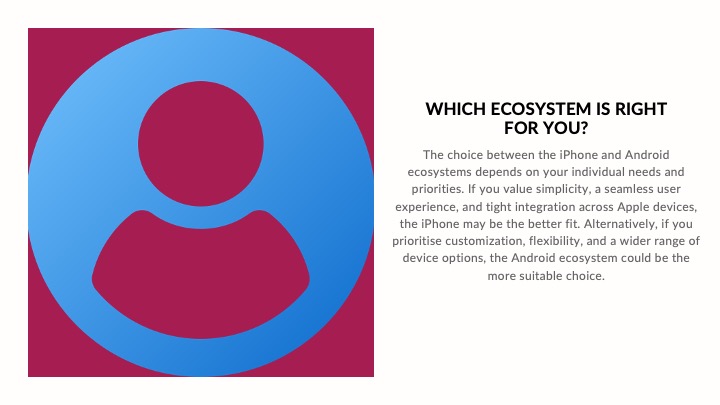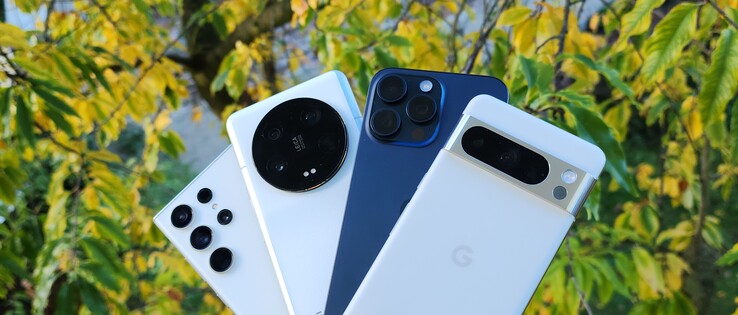The iPhone and Android ecosystems represent two distinct approaches to mobile technology, each with its own strengths and weaknesses. Here’s a breakdown of the key differences:
1. Operating System:
- iPhone: Runs on Apple’s iOS, a closed-source operating system known for its simplicity, user-friendliness, and focus on privacy.
- Android: Runs on Google’s Android, an open-source operating system that offers more customization, flexibility, and a wider range of device choices.
2. Hardware:
- iPhone: Apple designs and manufactures its own hardware, resulting in a tightly integrated ecosystem where software and hardware work seamlessly together.
- Android: Google provides the Android software to various manufacturers (Samsung, Google, OnePlus, etc.), leading to a diverse range of devices with different specs, features, and price points.

3. App Store:
- iPhone: Apps are primarily available through Apple’s App Store, which has a strong reputation for quality control and curation.
- Android: Apps can be downloaded from the Google Play Store and various third-party app stores, offering a wider selection but potentially less quality control.

4. Customization:
- iPhone: iOS offers limited customization options, prioritizing a consistent user experience across all devices.
- Android: Android allows for extensive customization, from widgets and launchers to custom ROMs, allowing users to personalize their devices to their liking.
5. Updates:
- iPhone: iPhones receive timely software updates directly from Apple, ensuring a consistent experience and long-term support.
- Android: Updates can be fragmented, with different manufacturers and carriers controlling the rollout schedule, leading to inconsistencies and delays.
6. Integration:
- iPhone: Seamless integration with other Apple devices and services, such as Macs, iPads, Apple Watch, and iCloud.
- Android: Strong integration with Google services, such as Gmail, Google Maps, and Google Assistant, but integration with other devices and platforms can vary.

7. Price:
- iPhone: Generally more expensive than comparable Android devices.
- Android: Offers a wider range of price points, from budget-friendly options to premium flagships.
Which ecosystem is right for you?
The best choice depends on your individual needs and priorities. If you value simplicity, a seamless ecosystem, and a consistent user experience, the iPhone might be a good fit. If you prioritize customization, flexibility, and a wider range of device choices, Android could be the better option.




